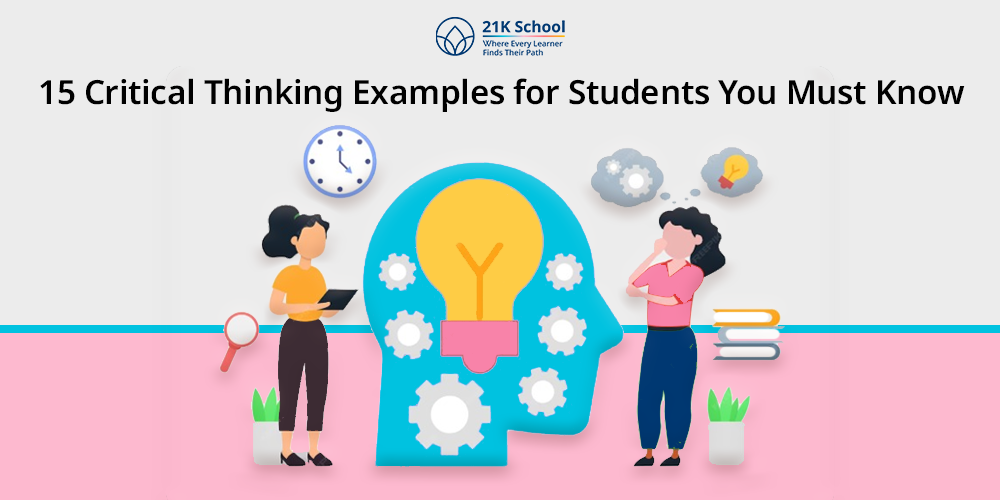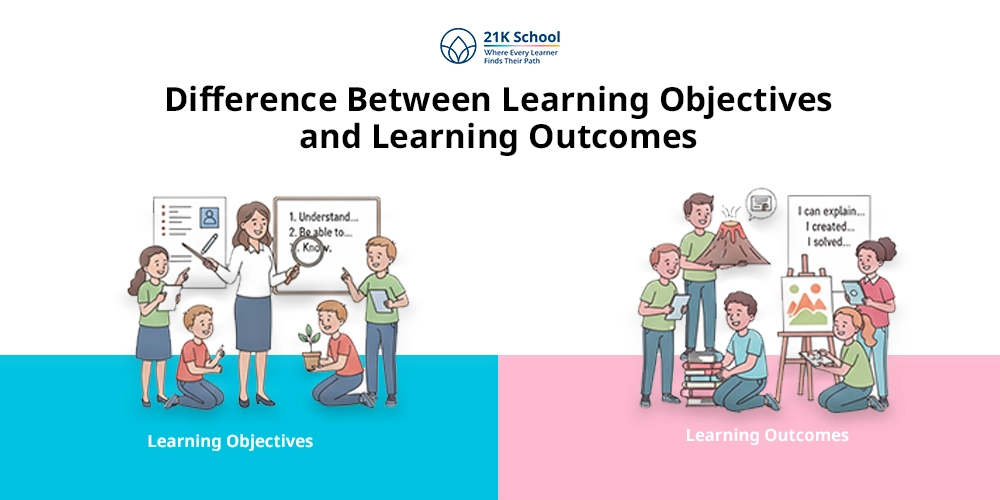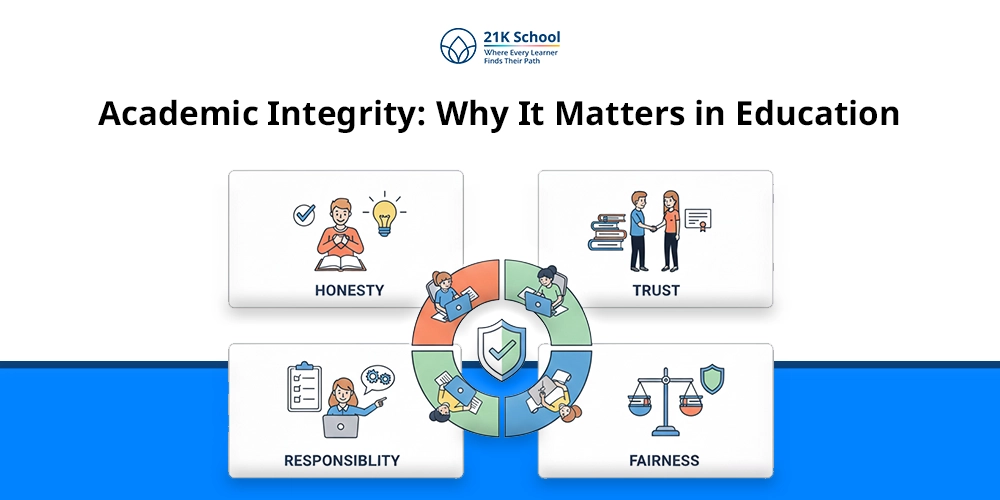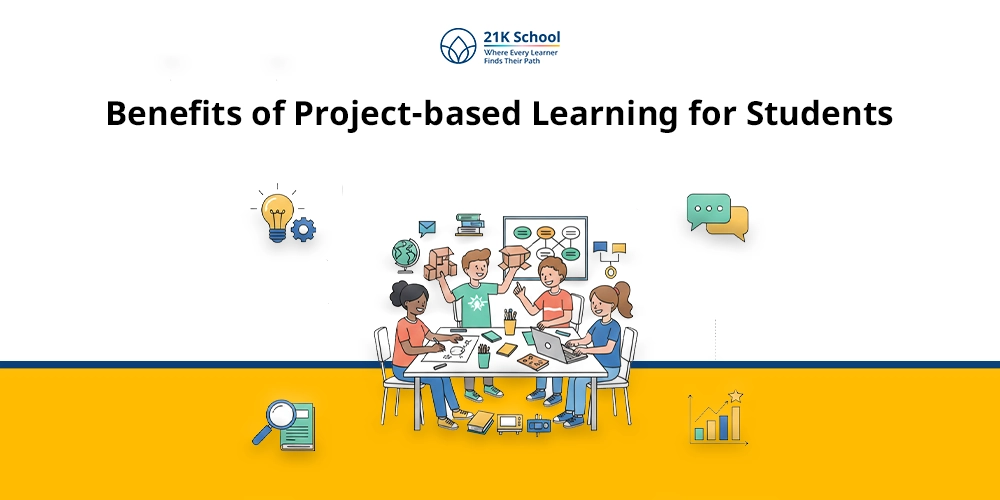
Critical thinking examples are easily found in real life problems with real-life people facing unpredicted conditions.
As students, you might also face these issues in your life on a regular basis. When your teacher asks you to work in online group projects or successfully achieve your assignment deadlines, critical thinking remains always at work.
Critical analysis of people and situations requires certain other skills that can be told as examples or types in which we practice it.
This article here represents such examples of critical thinking for students and finds where these components of critical thinking are found in our occupied life.
Also Read, critical thinking activities for kids.
Table of Contents
15 Critical Thinking Examples for Students
Your situations might shift and change, but one central aspect that’s a constant is critical thinking skills which involves conscious decision making.
Critical thinking patterns can be broken down into six primary skills, according to the Facione APA definition, as interpretation, analysis, inference, self-regulation, evaluation, and explanation.
Some examples of critical thinking that are regularly encountered and used by students include the following list:
1. Data Analysis
Students work with whatever information is presented to them, questioning the credibility of data found, and then analyse each factor affecting the consequences.
In real life, if a student is trying to decide which career path he should choose to get the best future jobs in the 21st century. He will have to analyse his educational qualifications, his skills, and the demand of that job in present days, which will lead to landing on a good job profile that he likes and also pays him well.
2. Problem Solving
A student has multiple work commitments due to multiple assignments, extracurricular activities, events, etc. He needs to solve problems with critical thinking instead of procrastination by following a structured plan and meeting the deadlines.
Solving daily problems needs critical thinking because to find accurate solutions to our problem, we need to analyse and find a way out of it.
3. Decision-Making
Decision-making ability is only beneficial when you are capable enough to make them right and in a way that serves you and your loved ones. This would only be possible when the goods and bads of a situation are critically analysed and thought in detail.
Now think about a situation where you are having the choice to be in a well-known college with high fees and a government college having low fees. In this scenario, you as a young person will have to look at your financial situation, your career ahead, and pros and cons of choosing any of the colleges.
4. Research
Thorough research is always trustworthy and recommended when you need to do critical thinking about a topic or situation. Going in depth and getting vital details that can work in your favour should be a priority.
For a student trying his best to perform in his class presentation does extensive research about the topic he chose. He would only feel comfortable and confident equally if he knows his topic thoroughly. While presenting that topic, if the class students ask some questions related to it, he can be assured of giving them the right answers with critical thinking.
5. Communication
An unbiased and healthy communication activities for students can line up ideas that are required against problems faced. Choosing from those conversations which part is beneficial and aligns with the required solutions can only be practiced once you know how to think critically and evaluate the best.
In a possible situation where a student is facing issues in a certain subject like “differentiation-integration”, think critically about his situation. Instead of sulking, he acknowledges his problem and asks his mates and communicates with them or teachers for help.
6. Interpretation
Interpretation denotes coming to conclusions after critical analysis of a problem or a solution suggested. Suppose a student has been given to interpret the central themes, poetic devices, and hidden meanings in a Hindi poem.
In this situation, he has to go deeper and critically analyse the poem to draw conclusions as per his understanding.
7. Ask Questions
Critically active people know very well what the significance of socratic method or asking questions is.
As a student you should never shy away from asking questions in your science classes like what, why and how of a concept. If it is not clear to you or you want to upgrade your knowledge with deeper insights about the topic, you should always analyse it critically.
8. Inference
In a scenario where critical thinking is required, without inference it won’t be practical. Inference is simply backing up your solutions or your interpretations with real evidence.
For example, when being a debate participant, you can give data or stats as reference of what you have been arguing through critical thinking to prove your point.
9. Open-Mindedness
A good critical thinker is one who is open to ideas and respects each one of them. This means that he has the ability to listen to every point of view and still can choose what’s the best out of all while depending on real facts.
A student who is a team leader of a science project can welcome everyone’s views on the project budget and then decide the most economical way to complete it effectively.
10. Reflective Practice
Critical thinkers might look like the most reliable and perfect ones but this is because they believe in self-reflection and self-management skills.
It is a ritual for students who are good at critical thinking to reflect where they lag, and can improve in the future to acquire 21st century skills for students.
11. Resolving Conflict
Another most common example of critical thinking can be seen when students are in a conflict, and choose to stay calm and mindful, while finding a way out. These kinds of situations arise when students either face ignorance and bias from teachers or their own fellow friends.
Resolving conflicts become easier for students who have collaboration skills and communication skills.
12. Creativity
Students who are good at critical analysis might also be good at creative thinking skills because they can analyse the smallest component of a problem with it and end up with the most novel and actionable solutions.
A learner who is good at sports and not at studies can join NCC that gives them an significant benefit while choosing colleges for higher studies.
Explore creative activities for kids.
13. Curiosity
When you as a child decide to find a pathway to cure your problem and upgrade your potential, you have already tapped into your curiosity area of the brain.
For instance, you were given a topic on women empowerment and how women themselves are trying to not speak in favour of feminism. Being a male student, you were unaware of the topic but you apply your critical thinking and feed your curiosity to find relevant details on the same. You didn’t give up due to unfamiliarity and got first position in the speech competition.
Critically able thinkers don’t give up and with curiosity go on with longer ways to success.
Read on to learn more about activities to encourage curiosity in children.
14. Providing Feedback
Whether it’s about getting or providing feedback (when asked) critically thinking students find themselves in better places. They are always ready to improve and get real positive criticism on their tasks.
A well-performing student (Rohan) who wants to submit his assignment but wants his friend’s true feedback before submission. His friend here gets the opportunity to dig deeper and critically analyse Rohan’s project and provide honest feedback.
15. Strategic Planning
Making right choices with right information involves strategies. And without critically analysing, those strategies after forming a plan can defeat you with their loopholes coming forward.
To understand, if a newly graduate girl tries to open her own start up, she needs to deeply strategise and look at various aspects of it like resources, loans, and backup plans if still fails.
Understand how to develop critical thinking skills in students.
Conclusion
Critical thinking examples are always present around us in varied situations teaching us better ways to execute critical thinking.
With students, as they are still learning, it becomes a bit difficult. But these learnings are a path towards their better communication skills, creative thinking, analysing, and following feedback.
Stick with these above examples when facing any real issue in your life and solve them efficiently with critical thinking.



